Published Dec 1, 2023
How Reginald Barclay Changed Starfleet for the Better
There has to be room for people like Barclay in Starfleet's future.
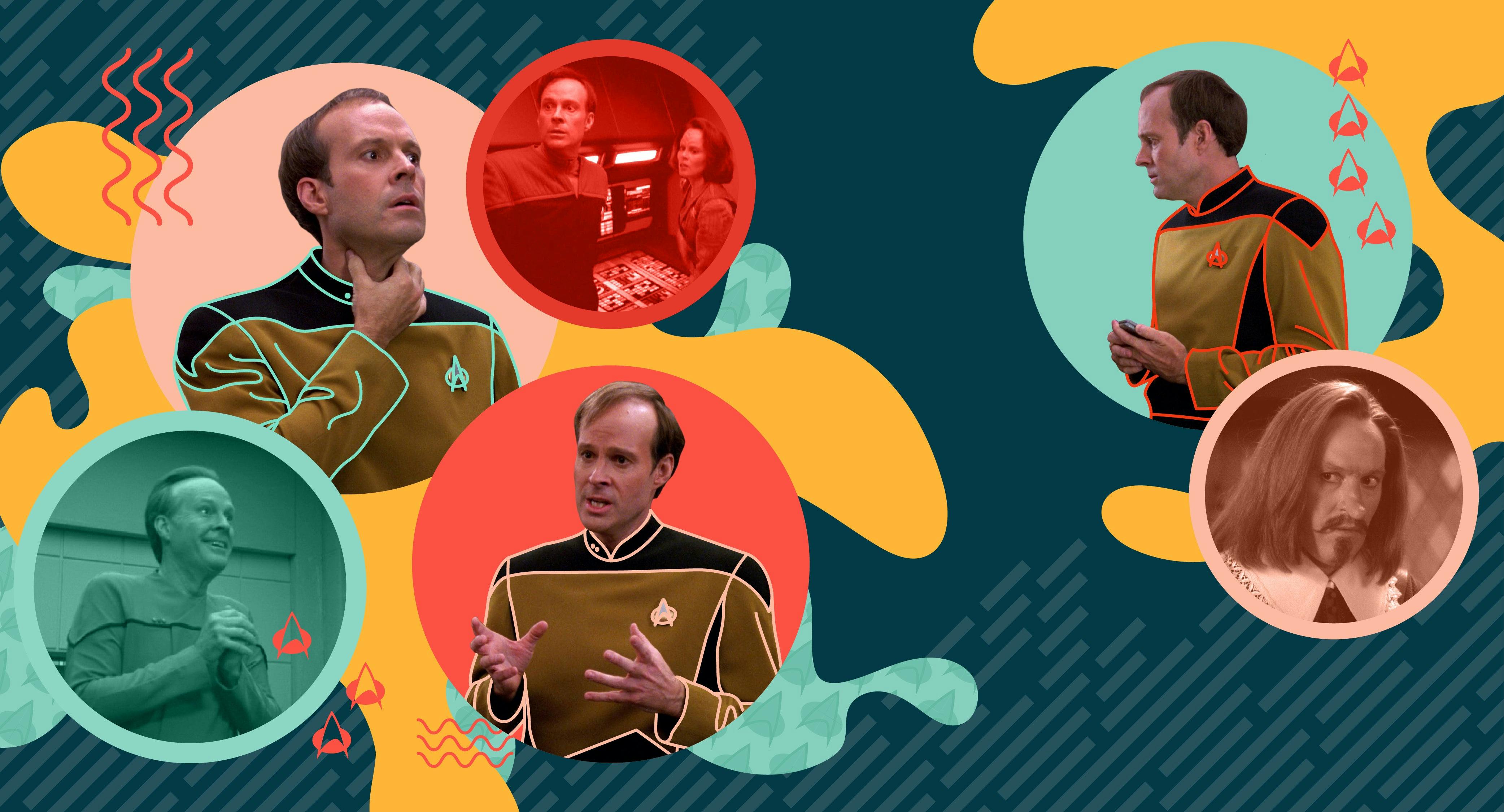
StarTrek.com
Starfleet’s ideals act as its driving force, shaping the future into a utopia where humanity strives for knowledge and self-improvement. The organization itself is filled with passionate and deeply skilled people, all exceptional at their jobs. Star Trek is packed with fantastic role models, and its positive message about hope and optimism for the future makes the show perfect “comfort watching.”
But it was during that Gene Roddenberry reportedly noticed that a certain character type was missing. What if there was someone who just didn’t fit in? Late in the series' third season, the show introduced a new character that would challenge Starfleet, who would later go on to span an 11-year character arc and ultimately be instrumental in getting the U.S.S. Voyager home — Lieutenant Reginald Barclay.
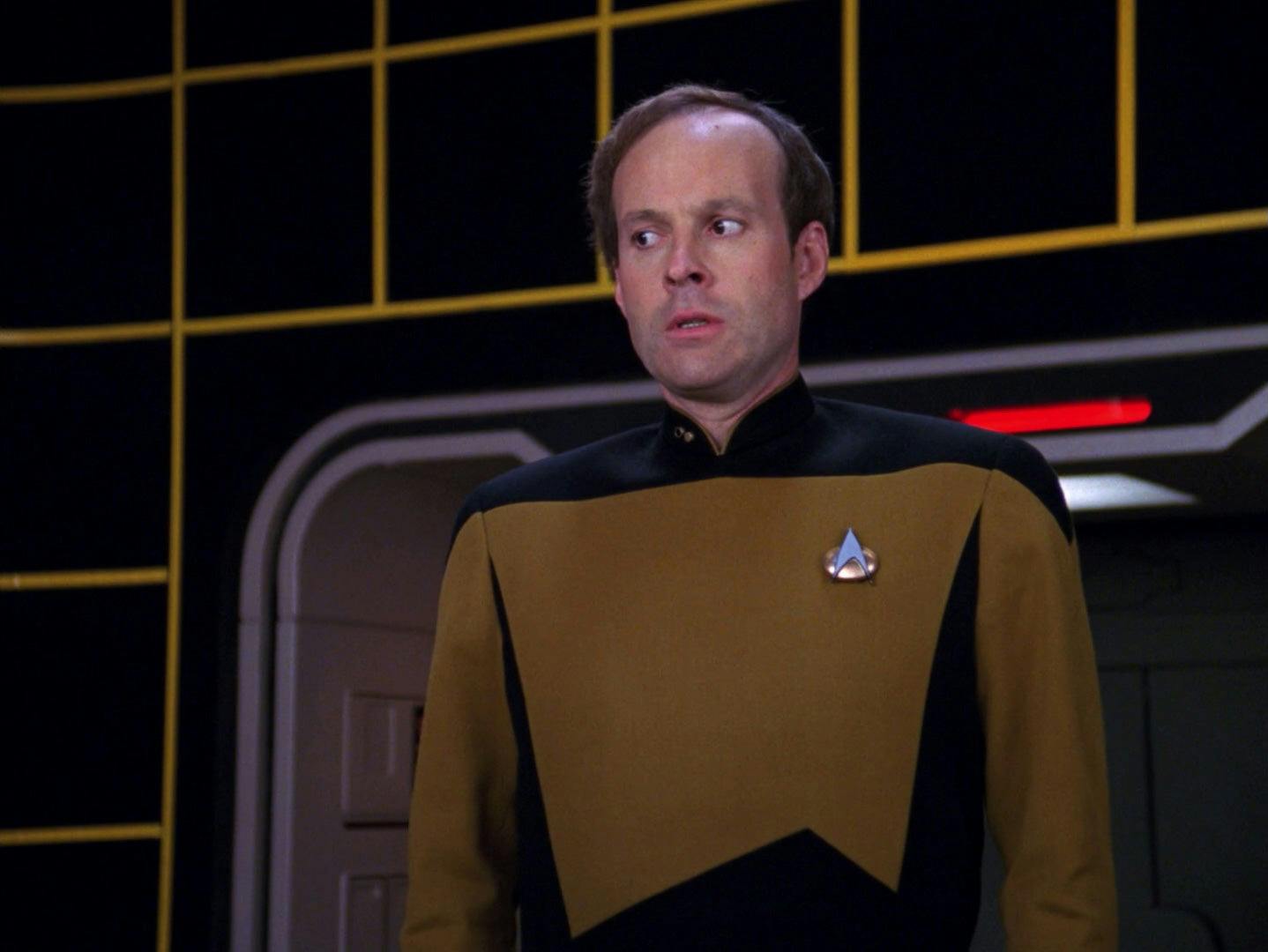
"Hollow Pursuits"
StarTrek.com
In his debut, “,” we see how fellow crew members initially consider Barclay. Early in the episode, Riker and La Forge openly discuss unsatisfactory reports caused by Barclay’s inability to fit in. The officer instinctively shields himself from their view using stacked cargo containers, coming across as neither professional nor subtle. Routinely late, distracted, insecure, he just isn’t what a model officer is expected to be, and the matter is soon escalated to the captain, with Riker adding Barclay’s “seclusive tendencies” at the Academy.
“I guess the question is whether Mr. Barclay is Enterprise material,” Riker says. Instead of transferring Barclay, Picard chooses to give him the chance to show what he can do and urges them to change their attitudes. He’s sympathetic, seeing a common bond, “[He] chose this way of life. He has made the same commitment to Starfleet that we all have.”
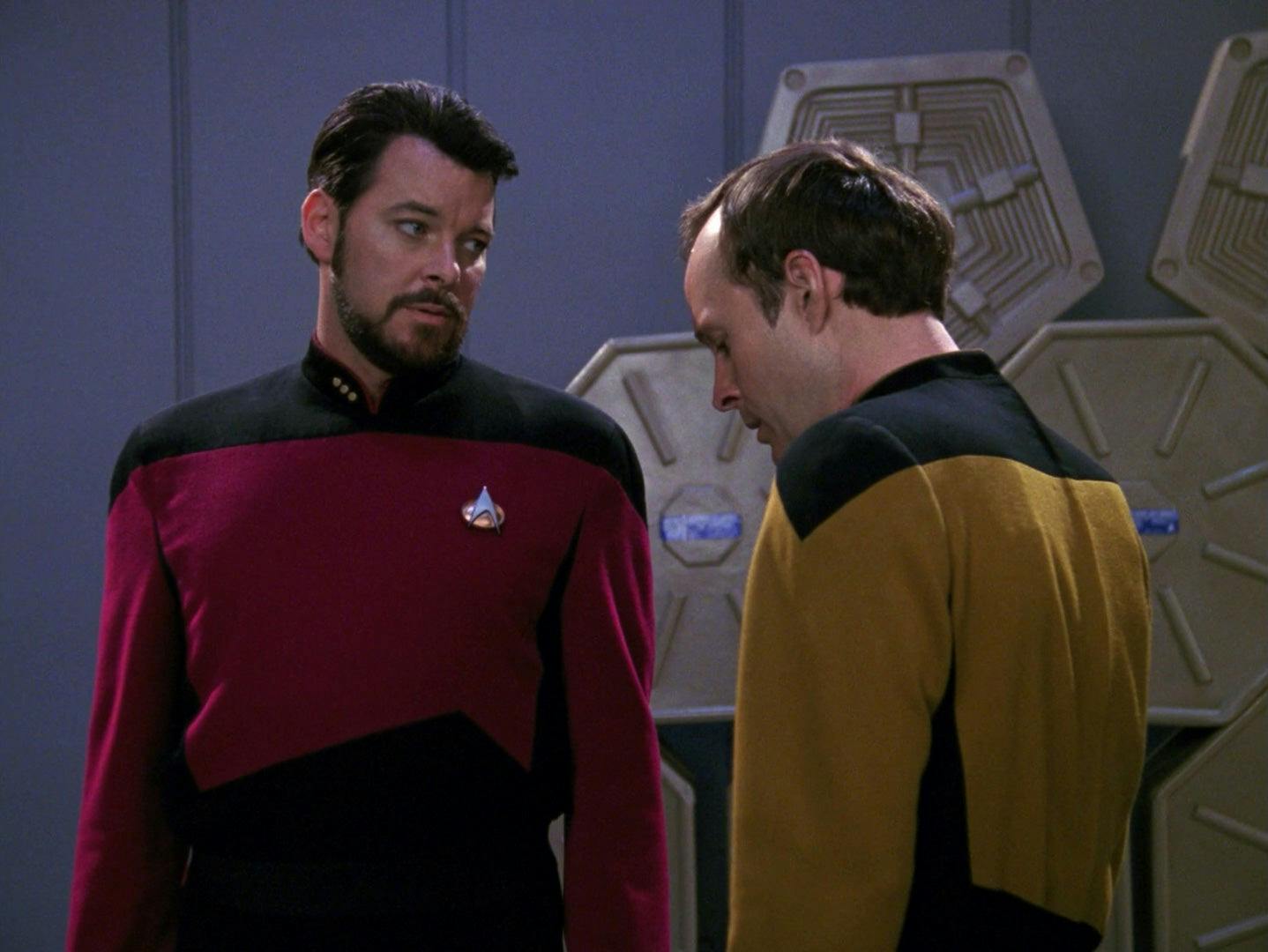
"Hollow Pursuits"
StarTrek.com
But Starfleet’s rigid expectations don’t disappear overnight. Later in the episode, La Forge reaches out to Guinan for advice. She talks about Barclay’s strengths, but when La Forge says Barclay “just doesn’t fit in here,” Guinan responds with a story about her uncle, whom she describes as “sort of the family misfit.” She says the idea of fitting in repels her. As La Forge continues to complain about Barclay’s faults and nervousness, Guinan says, “If I felt that nobody wanted to be around me, I'd probably be late and nervous too.” We learn about Barclay’s character, how the system deals with people who don’t fit in, and about the pressure of living up to the Starfleet standard. With Picard’s loyalty to individuals who make a commitment to Starfleet, and Guinan’s ability to connect with people, we have two trusted voices countering the adversarial attitude of the senior staff.
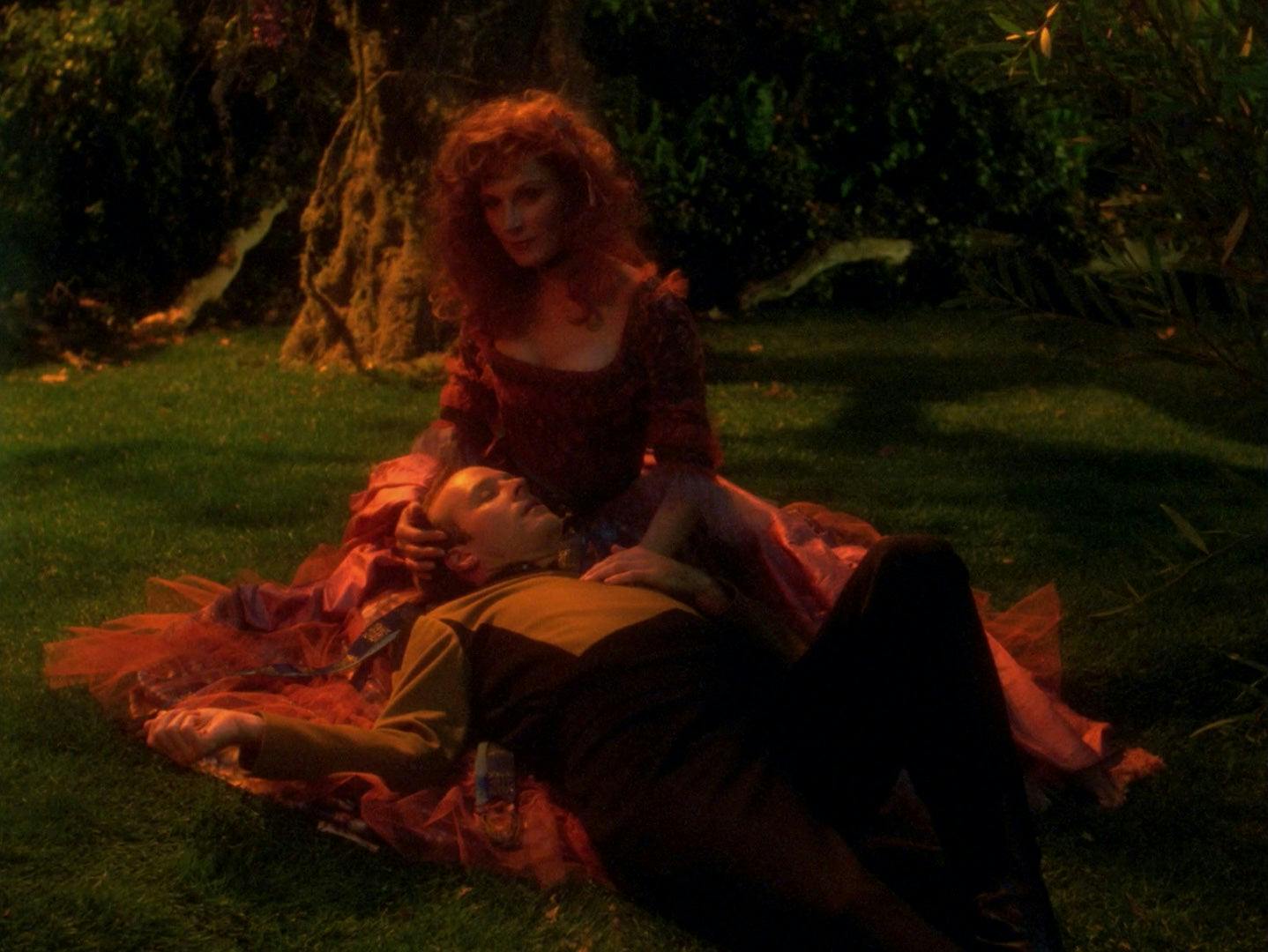
"Hollow Pursuits"
StarTrek.com
“Hollow Pursuits” also introduces the topic of ‘Holo-addiction,’ although arguably . Barclay’s mental health isn’t discussed specifically, but his anxiety and inability to move away from fixations may imply OCD to some viewers, where compulsive behavior seeks to relieve anxiety. We see Barclay’s reliance on the holodeck grow, with his programs often featuring the Enterprise crew and himself, the hero of the story.
After discovering one of the programs, La Forge is concerned about Barclay’s actions and opens up about his own experiences with Leah Brahms in “." It’s this opening that paves the way for arguably the best and most raw scene of the episode, a defining character moment for Barclay. He’s honest about his trouble fitting in, telling his commander, “Being afraid all the time of forgetting somebody's name, not knowing what to do with your hands. I mean, I'm the guy who writes down things to remember to say when there's a party. And then when he finally gets there, he winds up alone in the corner trying to look comfortable examining a potted plant. 'Just shy.' Sounds like nothing serious, doesn't it? You can't know.”
But it’s at the end of the episode, after being instrumental in helping La Forge identify a threat to the ship, that attitudes begin to change. Confident in his newfound value on the ship and in the relationships that he’s begun to forge, he bids the holographic crew goodbye and deletes the program.
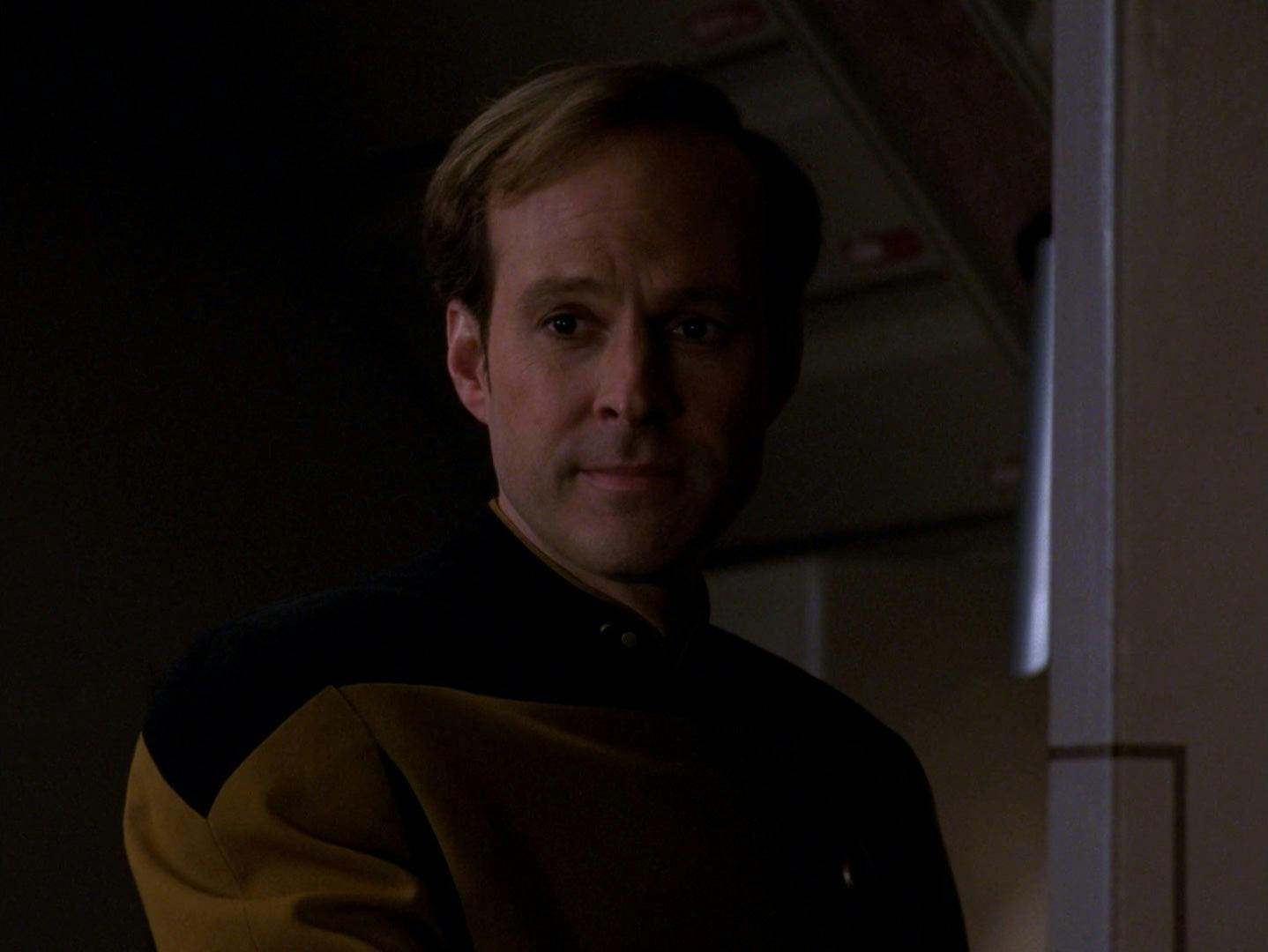
"The Nth Degree"
StarTrek.com
A year later, in “,” Barclay is now more involved in group activities on the ship, taking part in one of Dr. Crusher’s plays. Troi and Riker, previously wary of Barclay, rush to congratulate him on the progress he’s made in the past year. Troi doesn’t spare the praise, “You used to withdraw onto the holodeck. Look at yourself now. Look at all the other people you're with. You're not just acting, you're interacting. Give yourself some credit.” There’s a noticeable effort being made to include him, and this genuine affection is an ongoing theme throughout the episode.
As a result of an encounter with an alien probe, Barclay becomes increasingly intelligent and competent. But as his confidence turns into arrogance, he gets called on it. In frustration, he argues, “What? Because I'm beginning to behave like the rest of the crew? With confidence in what I'm doing?”
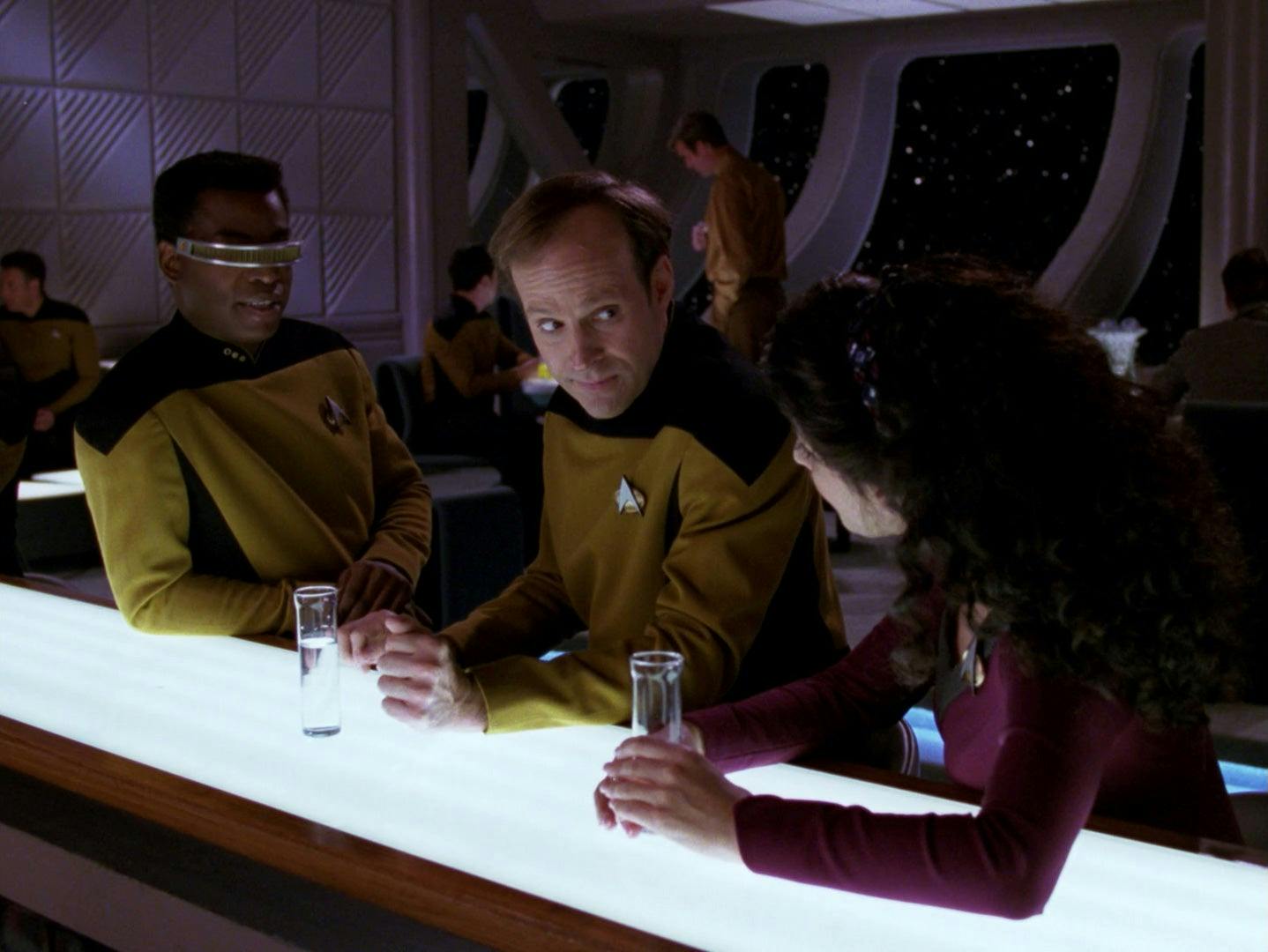
"The Nth Degree"
StarTrek.com
His behavior drives away the friends who have come to genuinely respect him. Even so, Barclay’s empathy and friendship are still obvious. In fact, he sacrifices himself for the crew, although the alien species who sent the probe eventually intervene, saving Barclay’s life. In the closing scene, Barclay is in 10 Forward with La Forge and Troi. He’s returning to normal. His friends sit and support with him as he comes to terms with the past few days. There’s a genuine sense of understanding.
Barclay returns two years later, in “.” On an away mission to the U.S.S. Yosemite, an abandoned Starfleet vessel, Chief O’Brien’s warning of a “bumpy ride” is too much for the transporter-phobic Barclay who experiences a panic attack. While Barclay is noticeably more anxious than before, two things reflect the positive changes that the Enterprise has made.
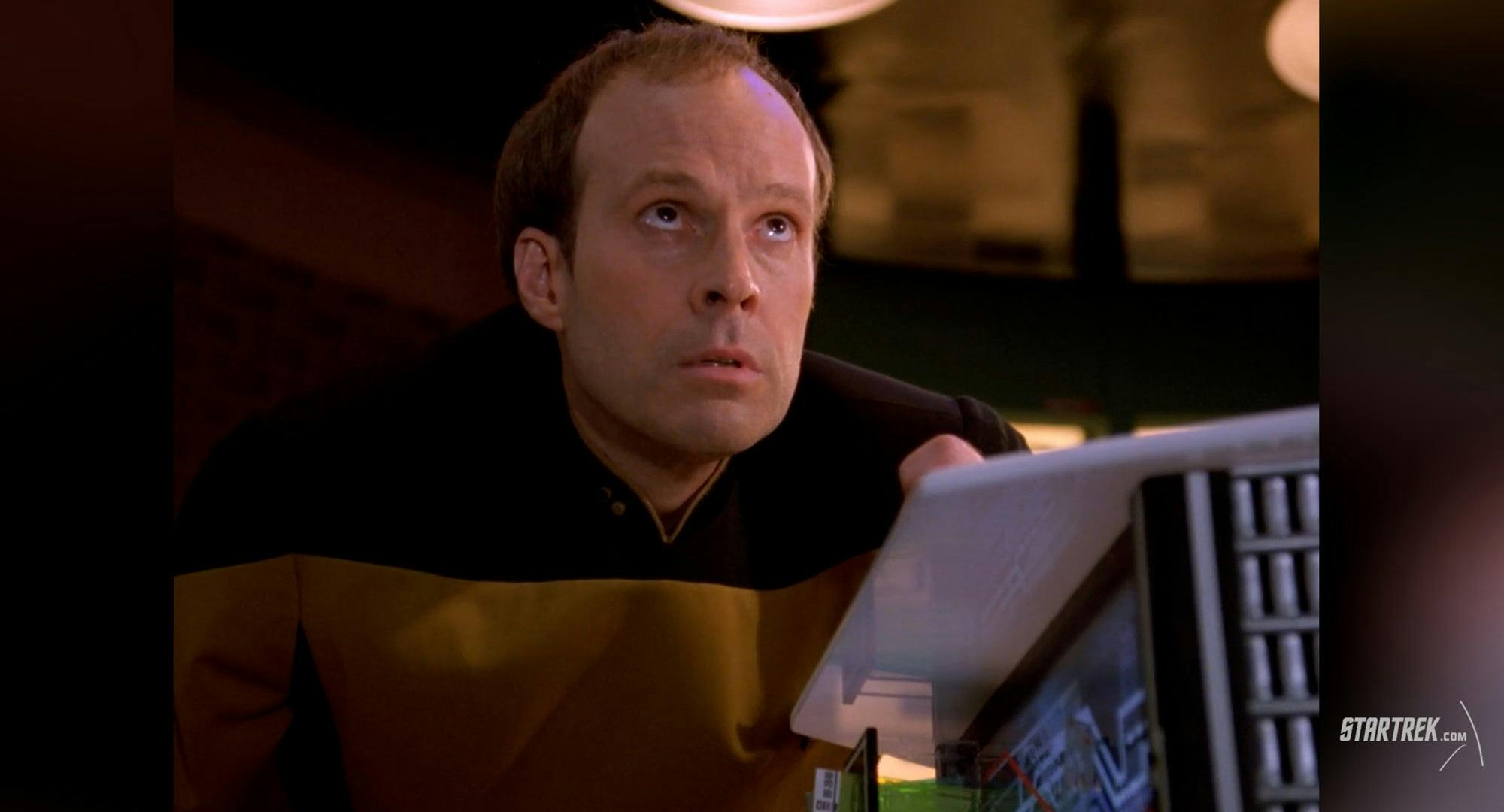
"Realm of Fear"
StarTrek.com
One of them is how others react to Barclay’s anxieties. O’Brien and Barclay talk about the former’s own fears, solidifying the idea that a model officer isn’t always fearless or confident. Later, when Barclay does beam over and sees a shape in the beam, La Forge and O’Brien help him investigate it. And when Barclay is short and somewhat irrational with the transporter chief, O’Brien recognizes that he’s acting out of anxiety and defuses the situation.
The second demonstration of that positive change is in how the senior staff talk to Barclay. When he steps off the transporter pad on the Yosemite, he’s visibly shaken. A friendly La Forge welcomes him without judgment and Riker also shows Barclay support. No one condemns Barclay for needing time to deal with his anxieties, and they recognize that he managed to take the leap despite deep-seated reservations.
Soon Barclay realizes that there is something trapped in the beam. The matter is taken seriously, not because they have to, but rather because the Enterprise has created an atmosphere where discourse and different viewpoints are welcomed. Barclay’s word is accepted like that of any other Starfleet officer. The crew soon discovers that Barclay’s claim is correct, proving himself instrumental in saving the Yosemite’s missing crew members.
Eventually, Barclay transfers from the Enterprise to Starfleet Command to work on the Pathfinder project to establish contact with Voyager.
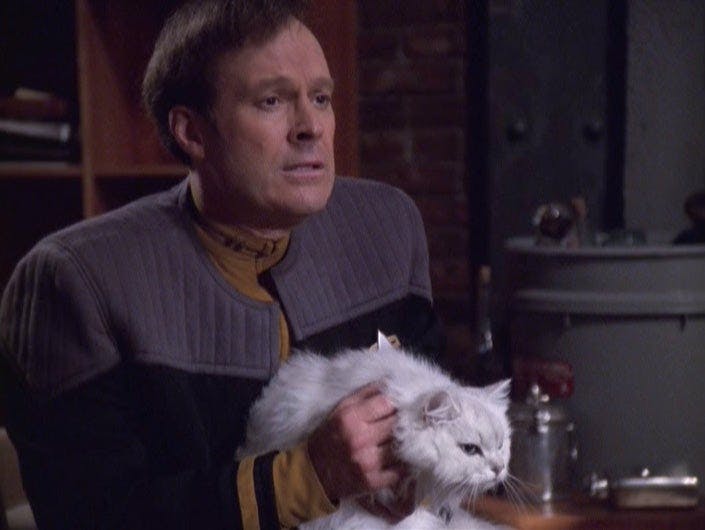
"Pathfinder"
StarTrek.com
“” begins as Barclay walks Troi through the events leading to his dismissal from his latest project and admits that he’s become obsessed with Voyager. His approach is at odds with the rest of the officers on the project. Commander Pete Harkins appreciates Barclay’s dedication to the project, but he doesn’t believe in his plan to create a wormhole that would allow communication with Voyager.
Barclay starts repeating old behavior, having recreated the Voyager crew in the holodeck. But the program is different from the ones he used to run on the Enterprise; those were an outlet for his frustration. Here, he interacts with a crew who appreciate him. We see how he’s fallen back into old habits, even though he insists he’s working out technical problems. But it’s clear that the simulation isn’t just about his work. He’s lacking friends; ever since he left the Enterprise, Barclay has been struggling to cope. He feels as if he lost his family.
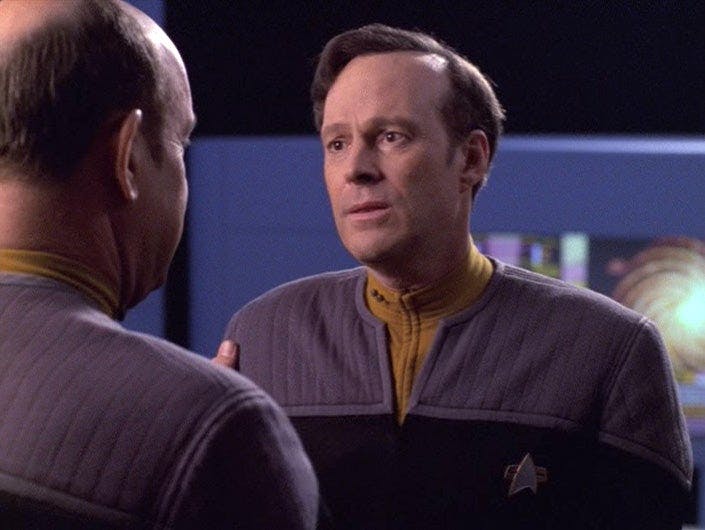
"Pathfinder"
StarTrek.com
During Admiral Paris’ visit the next day, Barclay mentions his wormhole idea against Harkins’ orders. When Harkins dismisses Barclay’s theory as premature, Barclay loses his temper; he feels they are betraying the people stranded in the Delta Quadrant. Admiral Paris doesn’t take kindly to the implication that he has forgotten about his own son, and Harkins dismisses Barclay for the day.
Whatever support or comfort Barclay may have taken from the Voyager simulation, he was serious about using it for research. Lack of progress caused Harkins to lose faith in Barclay’s suggestions, but with the false support of the holographic Voyager senior staff, Barclay can work whilst feeling like absolute faith has been placed on him.
It’s hard for Starfleet to see this in a positive light. When Harkins discovers what Barclay has been up to, it raises concerns about his mental health, but before Barclay can be removed from the project, a transmission from Voyager is received. The connection is brief, but it’s enough for the Admiral to talk to his son, and to let them know that Starfleet is going to bring them home.
Harkins credits the achievement to Barclay, and lightyears away in the Delta Quadrant, Voyager celebrates their new “honorary member of the Voyager crew.” The Doctor talks about Barclay’s colorful career and unusual medical history, but Janeway sums it up, “Well, whatever his problems, he certainly came through for us.”
In 's final season, Starfleet attempts to transmit a holographic version of Barclay to Voyager in order to help create a geodesic fold in space that would allow them to reach Alpha Quadrant. However, the transmission is hijacked by the Ferengi. Far more confident and self-aware than its creator, the hologram mingles easily with the Voyager crew. In fact, the personalities are so different that Barclay is considered to be completely separate from the hologram. Or as Kim puts it, “Hope [the real Barclay is] not too shy. He's going to have a 150 new friends when we get back home.”
Back on Earth, on the Pathfinder project, Barclay is trying to figure out why the transmission abruptly ended. In frustration, Barclay seeks out Troi; it’s with the counselor and the admiral’s support that Barclay ends up ultimately saving Voyager.
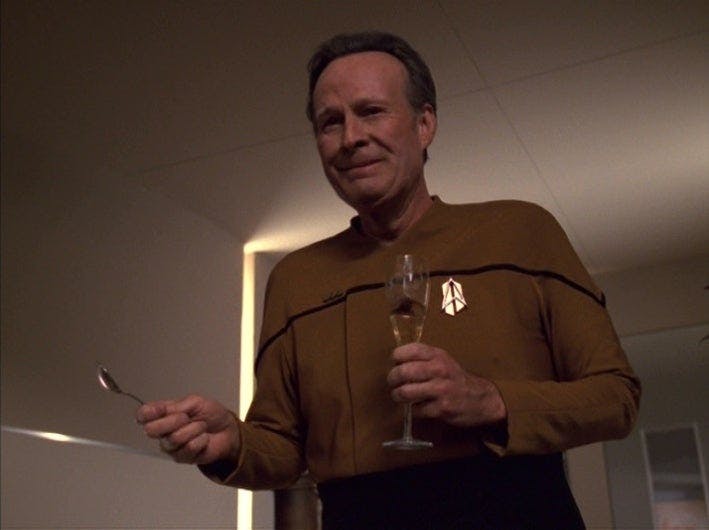
"Endgame"
StarTrek.com
We last see Barclay in Voyager’s finale, “,” set both in the present day and 26 years into the future. In the future, he’s gathered with his “adopted” family as they celebrate the 10th anniversary of their return to the Alpha Quadrant. There’s a real sense of long-lasting friendships and a boost in confidence that comes from being among equals. We also learn that Barclay is one of the few friends who continues to visit Tuvok regularly. So, when Admiral Janeway asks for his help on a clandestine mission, there’s a genuine sense of trust. He offers to go with her, knowing that it may be a one-way trip, but she turns him down. She thanks Barclay, saying she wouldn’t have been able to do this without him, her statement genuine and heartfelt.
Barclay’s character grows throughout The Next Generation and Voyager, as he finds new things that ground him and give him confidence. In that glimpse of the future, we see that he has flourished, surrounded by the friends that returned to him from the Delta Quadrant, brought home in great part by his determination. The guidelines, achievements, and sense of direction Starfleet provides to its people often failed this competent and passionate officer. He represents aspects of humanity that are easily overlooked or lost. Originally a candidate for a transfer off the Enterprise, he makes a difference time and time again. He was enabled by his fellow officers’ efforts to create an open and welcoming atmosphere. Even when his superiors didn’t take the time to listen, that didn’t stop Barclay. He was driven to understand a situation fully in order to help others.

"The Nth Degree"
StarTrek.com
Starfleet is rigid in its structure, and it needs to be in order to be able to sustain itself. Someone like Barclay doesn’t fit their definition of a “model officer,” and Barclay isn’t one. Even so, he is invaluable.





